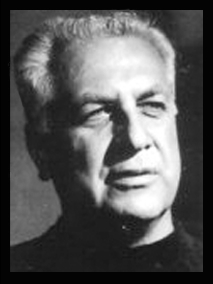Tag: Wasco State Prison
Life in a Prison Classroom
 I know life in a prison classroom, and the learning environment you may or may not find once you’ve taken a seat.
I know life in a prison classroom, and the learning environment you may or may not find once you’ve taken a seat.
A brief click-through of “5 Projects to Watch in 2016” from Correctional News leaves me wondering how much prison officials really know about the obstacles inmates face just getting through a detention facility’s classroom door. What does it matter, you ask? Well, in an era where words like “reform,” “rehabilitation,” and “recidivism” are on everyone’s lips, it’s important to know when a component as critical as education is simply being given lip service.
Correctional News covers prison operations, design, and construction. It celebrates grand openings and groundbreakings because imminent completion dates tend to matter to rubber mattress merchants, vendors of detection products, and shower flooring suppliers.
Currently showcased are the East County Detention Center near Palm Springs, for example, which is set to open in 2017, the Kern County justice facility in Bakersfield, and the new Utah State Prison, among others. California being where I paid my debt to society, I tend to monitor its prison system more closely than I do others. But all of these entries have something in common, and that’s my point: they feature anemic descriptions of the education facilities also under construction. Rehabilitation-as-footnote here, will eventually make corrections administrators and state officials look as though they’re simply hanging wreaths of rehabilitation on freshly painted classroom doors and leaving it at that. Read more
Murderers Are His Life
Writing teachers are neurotic candy-asses. Not David Scott Milton
“All writing is re-writing.” Yeah, try telling that to someone who last wrote in blood.
 Author and playwright David Scott Milton spent 13 years teaching creative writing at CCI, a “SuperMax” prison in Tehachapi, California. “Tehachapi,” as the facility itself is better known, has seemingly been around forever. It was built for inmates refusing to live by regular prison rules, murderers serving lengthy sentences, and men assigned to extreme isolation in high-security units, a.k.a. the controversial S.H.U. programs making headlines today.
Author and playwright David Scott Milton spent 13 years teaching creative writing at CCI, a “SuperMax” prison in Tehachapi, California. “Tehachapi,” as the facility itself is better known, has seemingly been around forever. It was built for inmates refusing to live by regular prison rules, murderers serving lengthy sentences, and men assigned to extreme isolation in high-security units, a.k.a. the controversial S.H.U. programs making headlines today.
Milton’s average Tehachapi class consisted of 15 to 20 lifers, most in for murder. I met him after he’d been hired to teach one of his classes about 80 miles north, on the Level III Yard at Wasco State Prison. By then, David Scott Milton was a veteran prison educator familiar with every risk, procedure, and personal reward his job could entail.
First off, for all the prominence of literacy and its rehabilitative powers, which we assume exists behind bars, you’d think creative writing courses would be better attended. They’re not. Though the power to save lives endures in the written word, a lot of the fellas incorrectly assume writing credentials come with the territory.
Yet you don’t learn to write in a prison writing class: you learn why it’s important to fight for the time to write, which sounds funny considering inmates are supposed to have nothing but time. But if there’s one thing true about prison, it’s that it’s one upended Hollywood cliché after the next. Read more

